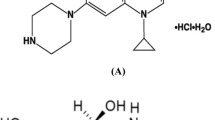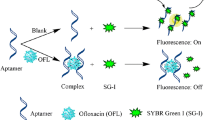Abstract
Gram-negative bacteria cause infections such as skin infection, meningitis, and pneumonia in human being. Gram-negative bacteria are highly resistant to most availaible bactericidal drugs. One of the most commonly used Gram-negative bactericidal drug is Polymyxin B sulfate (PMS). In addition, it is used in cases of highly resistant Gram-negative bacterial infections. The widespread of PMS necessitate the development of an exceedingly sensitive and selective fluorimetric assay for its determination in pure form, different pharmaceutical dosage forms, and human plasma. The presented method is used to determine PMS in their dosage form (vials) and combined pharmaceutical formulations (skin and eye ointments) with a high degree of accuracy and selectivity. The described procedure relies on the structure of a derivative of a high degree of fluorescence called dihydropyridine, via the condensation of the amino moiety of PMS with two equivalents of acetylacetone in the presence of formaldehyde and Teorell buffer (pH = 3). The fluorescent product was measured at 471 nm (λex = 402 nm). The linearity ranged from 100-3000 ng mL−1 of PMS with an excellent r2 of 0.9998. LOD and LOQ were 27.16 ng mL−1 and 82.30 ng mL−1, respectively. Owing to the developed method's high selectivity, it was successfully utilized for assay of PMS, in the ointment, in the presence of oxytetracycline as an active ingredient. Furthermore, the procedure applied for the estimation of parenteral PMS in human plasma with very good mean recovery 97.42 ± 1.46.







Similar content being viewed by others
References
Bakthavatchalam YD, Pragasam AK, Biswas I, Veeraraghavan B (2018) Polymyxin susceptibility testing, interpretative breakpoints, and resistance mechanisms: An update. J Glob Antimicrob Resist 12:124–136
Quintanilha JC, da Costa Duarte N, Lloret GR, Visacri MB, Mattos KP, Dragosavac D, Falcão AL, Moriel P (2019) Colistin and polymyxin B for treatment of nosocomial infections in intensive care unit patients: pharmacoeconomic analysis. Int J Clin Pharm 41:74–80
Brown P, Dawson MJ (2017) Development of new polymyxin derivatives for multi-drug resistant Gram-negative infections. J Antibiot (Tokyo) 70:386–394
Ngamprasertchai T, Boonyasiri A, Charoenpong L, Nimitvilai S, Lorchirachoonkul N, Wattanamongkonsil L, Thamlikitkul V (2018) Effectiveness and safety of polymyxin B for the treatment of infections caused by extensively drug-resistant gram-negative bacteria in Thailand. Infect Drug Resist 11:1219–1224
Pan S, Huang X, Wang Y, Li L, Zhao C, Yao Z, Cui W, Zhang G (2018) Efficacy of intravenous plus intrathecal/intracerebral ventricle injection of polymyxin B for post-neurosurgical intracranial infections due to MDR/XDR Acinectobacter baumannii: A retrospective cohort study, Antimicrob. Resist. Infect Control 7:1–9
Rocha ED, Ferreira MR, dos Santos Neto E, Barbosa EJ, Löbenberg R, Lourenço FR, Bou-Chacra N (2020) Enhanced In vitro antimicrobial activity of polymyxin B–coated nanostructured lipid carrier containing dexamethasone acetate. J Pharm Innov 1–11
Laskey E, Chen Y, Sohn MB, Gruber E, Chojnacki M, Wozniak RAF (2020) Efficacy of a Novel Ophthalmic Antimicrobial Drug Combination Toward a Large Panel of Staphylococcus aureus Clinical Ocular Isolates From Around the World. Cornea 39:1278–1284
Moore NA, Czyz CN, Carter TD, Foster JA, Cahill KV (2017) Neomycin, polymyxin B, and dexamethasone allergic reactions following periocular surgery. J Ophthalmic Inflamm Infect 7:1–4
Tang J, Guan H, Dong W, Liu Y, Dong J, Huang L, Zhou J, Lu S (2020) Application of compound polymyxin B ointment in the treatment of chronic refractory wounds. Int J Low Extrem Wounds
Krzek J, Starek M, Kwiecień A, Rzeszutko W (2001) Simultaneous identification and quantitative determination of neomycin sulfate, polymixin B sulfate, zinc bacytracin, and methyl and propyl hydroxybenzoates in ophthalmic ointment by TLC. J Pharm Biomed Anal 24:629–636
Cao G, Ali FEA, Chiu F, Zavascki AP, Nation RL, Li J (2008) Development and validation of a reversed-phase high-performance liquid chromatography assay for polymyxin B in human plasma. J Antimicrob Chemother 62:1009–1014
Thomas TA, Broun EC, Abildskov KM, Kubin CJ, Horan J, Yin MT, Cremers S (2012) High-performance liquid chromatography-mass spectrometry assay for polymyxin B1 and B2 in human plasma. Ther Drug Monit 34:389
Covelli J, Ruszaj D, Straubinger R, Li J, Rao GG (2017) The development and validation of a simple liquid chromatography-tandem mass spectrometry method for polymyxin B1 and B2 quantification in different matrices. J Chromatogr B Anal Technol Biomed Life Sci 1065:112–118
Liu X, Yu Z, Wang Y, Wu H, Bian X, Li X, Fan Y, Guo B, Zhang J (2020) Therapeutic drug monitoring of polymyxin B by LC-MS/MS in plasma and urine. Bioanalysis 12:845–855
Wang P, Zhang Q, Qin Z, Xing H, Xu M, Pei H, Yang J, Zhang X (2020) A Simple and Robust Liquid Chromatography With Tandem Mass Spectrometry Analytical Method for Therapeutic Drug Monitoring of Plasma and Cerebrospinal Fluid Polymyxin B1 and B2. Ther Drug Monit 42:716–723
Pendela M, Adams E, Hoogmartens J (2004) Development of a liquid chromatographic method for ear drops containing neomycin sulfate, polymyxin B sulfate, and dexamethasone sodium phosphate. J Pharm Biomed Anal 36:751–757
Mannan A, Khan AJ, Khan M, Abbas G (2017) Validated Spectrophotometric Method for Determination of Polymaxin-B Sulfate in Pharmaceutical Formulations. RADS J Pharm Pharm Sci 5:33–38
Gallego JML, Arroyo JP (2001) Simultaneous resolution of dexamethasone and polymyxin B by spectrophotometry derivative and multivariate methods. Anal Lett 34:1265–1283
Gallego JL, Arroyo JP (2001) Spectrophotometric resolution of ternary mixtures of Dexamethasone, Polymyxin B, and Trimethoprim in synthetic and pharmaceutical formulations. Anal Chim Acta 437:247–257
Severino P, Silveira EF, Vazzana M, Chaud MV, Santana MHA, Souto EB (2015) Validation of a UV spectrophotometric assay for the quantification of polymyxin B in solid lipid nanoparticles. Pharmazie 70:693–697
El-Kosasy AM, Abdel-Aziz O, Magdy N, El Zahar NM (2015) Screening and optimization of the reaction of polymyxin B sulfate with NBD-Cl for the synchronous spectrofluorimetric determination of polymyxin B sulfate in human plasma. J Fluoresc 25:695–705
Baron D, Rozsypal J, Michel A, Secret E, Siaugue JM, Pluháček T, Petr J (2020) Study of interactions between carboxylated core-shell magnetic nanoparticles and polymyxin B by capillary electrophoresis with inductively coupled plasma mass spectrometry. J Chromatogr A 1609
Xu L, Burkin M, Eremin S, Dias ACP, Zhang X (2019) Development of competitive ELISA and CLEIA for quantitative analysis of polymyxin B. Food Anal Meth 12:1412–1419
Liu J, Huang Z, Ruan B, Wang H, Chen M, Rehman S, Wu P (2020) Quantitative proteomic analysis reveals the mechanisms of polymyxin B toxicity to Escherichia coli. Chemosphere 259:127449
Pesez MB (1974) Colorimetric and fluorimetric analysis of organic compounds and drugs. Marcel Dekker INC New York
Atia NN, Marzouq MA, Hassan AI, Eltoukhi WE (2020) A new spectrofluorimetric assay for quantification of Amisulpride and Memantine hydrochloride in real human plasma sample and pharmaceutical formulations via Hantzsch reaction, Spectrochim. Acta - Part A Mol Biomol Spectrosc 224:117388
Marzouq MA, Salman BI, Hussein SA, Ali MFB (2019) Hantzsch reaction approach for determination of teicoplanin and vancomycin in real human plasma: Application to pharmaceutical preparations and synthetic mixture with rifampicin for a drug-resistant strain of Staphylococcus aureus. Microchem J 147:25–29
Abu-Hassan AA, Ali R, Derayea SM (2020) A new convenient methodology based on dihydropyridine derivative for selective fluorimetric analysis of baclofen: Application to spiked urine and content uniformity evaluation. Spectrochim Acta - Part A Mol Biomol Spectrosc 248:119165
El-Hamd MA, Ali R, Haredy AM, Ahmed HM, Derayea SM, Abdelmageed OH (2017) Application of hantzsch reaction as a new method for spectrofluorimetric determination of some cephalosporins. J Appl Pharm Sci 7:147–155
Omar MA, Ahmed HM, Hammad MA, Derayea SM (2015) Validated spectrofluorimetric method for determination of selected aminoglycosides. Spectrochim Acta - Part A Mol Biomol Spectrosc 135:472–478
Hammad MA, Omar MA, Salman BI (2017) Utility of Hantzsch reaction for development of a highly sensitive spectrofluorimetric method for determination of alfuzosin and terazosin in bulk, dosage forms, and human plasma. Luminescence 32:1066–1071
Guideline ICH (2005) Validation of analytical procedures: text and methodology Q2 (R1). In: International conference on harmonization. Geneva Switzerland
Author information
Authors and Affiliations
Contributions
All authors have equal contribution in the work.
Corresponding author
Ethics declarations
Ethics Approval
Not applicable.
Cosent to Participate
Not applicable.
Consent for Publication
Not applicable.
Conflict of Interests
No conflict of interests.
Additional information
Publisher's Note
Springer Nature remains neutral with regard to jurisdictional claims in published maps and institutional affiliations.
Rights and permissions
About this article
Cite this article
Attia, T.Z., Abdelmajed, M.A., Omar, M.A. et al. Selective Spectrofluorimetric Protocol for Determination of Commonly Used Gram-negative Bactericidal Drug in Combined Pharmaceutical Dosage Forms and Human Plasma. J Fluoresc 32, 603–612 (2022). https://doi.org/10.1007/s10895-021-02862-6
Received:
Accepted:
Published:
Issue Date:
DOI: https://doi.org/10.1007/s10895-021-02862-6




